Title : New qPCR method for identifying decapod hepandensovirus 1 in penaeus vannamei shrimp
Abstract:
Decapod hepandensovirus 1 (Decapod hepanhamaparvovirus 1, DHPV) is a viral pathogen that infects various captured or cultured penaeid shrimp species, causing digestive disruption by targeting the hepatopancreas of the host. Our recent study has detected DHPV in farmed Penaeus vannamei, a species widely cultivated in the shrimp aquaculture industry. Given the prevalence of DHPV in shrimp farms across different regions, it is crucial to develop effective diagnostic methods to identify and manage the virus.
In this study, we present a diagnostic quantitative PCR (qPCR) method targeting DHPV in P. vannamei. The qPCRprimers and TaqMan probe were designed from the partial DHPV sequence identified in Korea. To determine the qPCR's specificity, we performed a test with the DNAs of four major shrimp pathogens, including infectious hypodermal and hematopoietic necrosis virus (IHHNV), white spot syndrome virus (WSSV), acute hepatopancreatic necrosis disease (AHPND), and Enterocytozoon hepatopenaei (EHP). The result showed no cross-reaction of the primers with other shrimp pathogens or the host genome. The newly developed qPCR method was applied to various samples obtained from shrimp farms, including shrimp, water, feces, crab, and barnacle samples, as well as samples from laboratory bioassays The qPCR assay was able to detect DHPV from all of the shrimp farm samples, indicating its practical utility in identifying DHPV. The laboratory bioassay confirmed the possibility of horizontal transmission and showed that although the shrimp survived without notable gross signs, they continued to carry a significant amount of the virus, potentially acting as vectors that hinder growth rates and spread disease in long-term farming practices.
In addition, qPCR was performed on four types of shrimp tissue sampled from six specific individual shrimps, including the hepatopancreas, gill, body muscle, and cuticle. The qPCR result showed that the hepatopancreas had the highest copy number among the four tissues, except for one shrimp. Thus, while the qPCR method can detect DHPV in any examined tissue, it is advisable to use hepatopancreas tissue for viral diagnosis due to its comparatively higher copy number and the virus's known tendency to infect the epithelial cells of the hepatopancreas.
Overall, the development of the DHPV qPCR assay is a crucial step toward implementing appropriate measures to prevent the spread of DHPV in the aquaculture industry. This assay can be used to screen shrimp populations for DHPV infection, allowing for early detection and the application of quarantine protocols to prevent further spread within and between shrimp farms. However, to protect thesustainability of the aquaculture industry, further research is needed to fully understand the potential implications of DHPV spread and to continue to develop effective DHPV control and prevention



